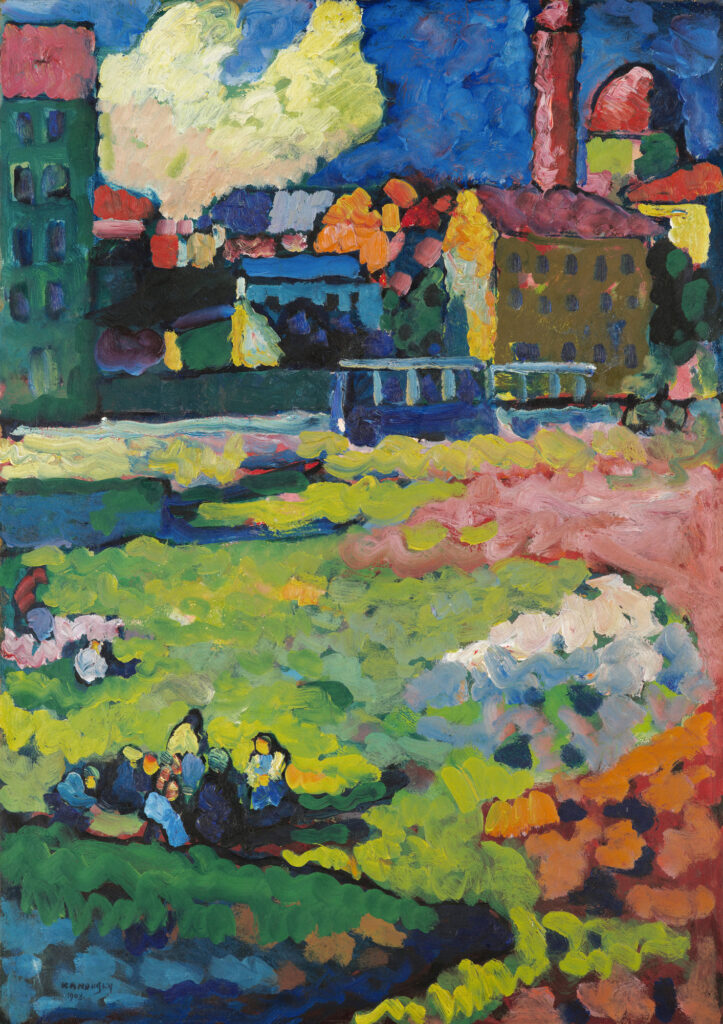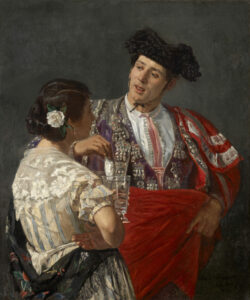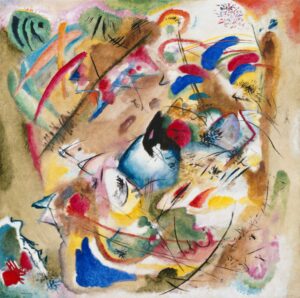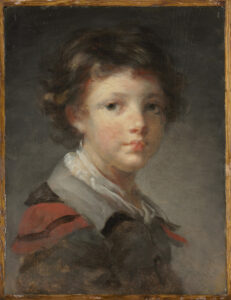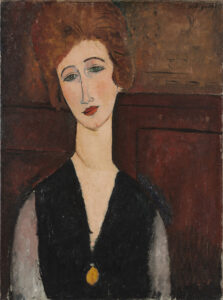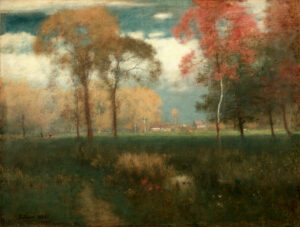This work marks a decisive turning point in Kandinsky’s artistic evolution toward abstraction.
Painted upon his settling in Munich in 1908, it testifies to a major stylistic liberation influenced by Fauvism. The composition is organized around a striking contrast between the deep, luminous blue of the sky and the vibrant tones of the foreground, dominated by greens, yellows, and reds applied in energetic strokes. Here the artist abandons atmospheric illusionism in favor of pictorial matter applied with a palette knife in a “wild and carefree” technique. This revolutionary approach, nourished by Fauvist experiences transmitted through Jawlensky, allows Kandinsky to make color “sing” with intensity, prefiguring his future abstract explorations.
Further Information
- Munich – Outside the city, Wassily Kandinsky, 1908
- Oil on cardboard, 68.8 cm × 49 cm
- Städtische Galerie im Lenbachhaus und Kunstbau München, Gabriele Münter Foundation 1957
- https://www.lenbachhaus.de/en/digital/collection-online/detail/muenchen-vor-der-stadt-30004360
Wassily Kandinsky (1866-1944), emblematic figure of artistic modernity and theorist of abstract art, underwent a pivotal artistic metamorphosis in 1908. Only at thirty did he definitively embrace an artistic career, settling in Munich to study at the Academy of Fine Arts. After years of experimentation and incessant travels across Europe, his discovery of Murnau with his partner Gabriele Münter constituted a revelation. This Bavarian period, enriched by exchanges with Jawlensky and von Werefkin, catalyzed his break with traditional figurative art. Kandinsky then developed his revolutionary theory on the “inner necessity” of art and the pure expressivity of color, laying the conceptual foundations that would lead to his first entirely abstract compositions as early as 1910. Co-founder of the Der Blaue Reiter group in 1911, he became one of the undisputed pioneers of non-figurative art, durably influencing 20th-century art.

